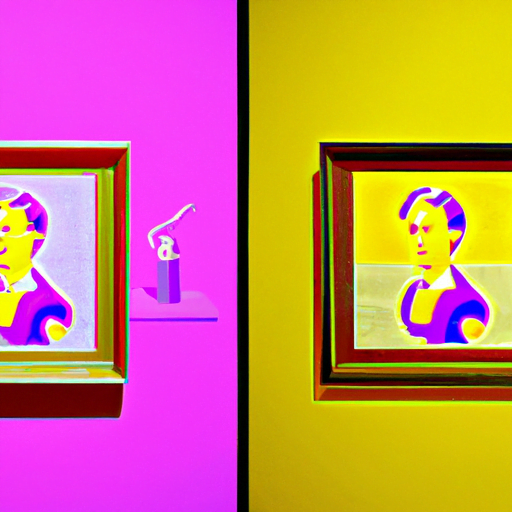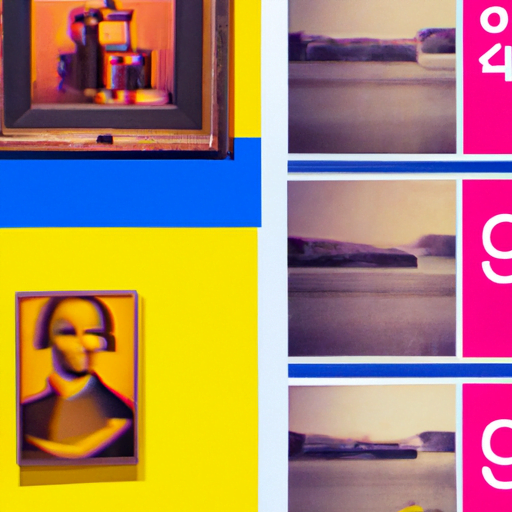
-
Table of Contents
AI and Art Curation: Creating Tailored Digital Galleries

Art curation has long been a crucial aspect of the art world, ensuring that artworks are displayed in a way that enhances their meaning and impact. Traditionally, curators have relied on their expertise and intuition to curate exhibitions and galleries. However, with the advent of artificial intelligence (AI), the art curation landscape is undergoing a significant transformation. AI is revolutionizing the way art is curated, allowing for the creation of tailored digital galleries that cater to individual preferences and interests. In this article, we will explore the intersection of AI and art curation, examining how AI is being used to curate digital galleries and the implications it has for the art world.
The Role of AI in Art Curation
Art curation involves selecting and organizing artworks to create a cohesive and meaningful exhibition. Traditionally, curators have relied on their knowledge, experience, and personal taste to curate galleries. However, AI is now being used to augment and enhance the curation process.
AI algorithms can analyze vast amounts of data, including art historical information, artist biographies, and visitor preferences, to identify patterns and trends. This data-driven approach allows AI to make informed decisions about which artworks to include in a gallery and how to arrange them. By analyzing visitor data, AI can also personalize the gallery experience, tailoring it to individual preferences and interests.
Creating Tailored Digital Galleries
One of the most exciting applications of AI in art curation is the creation of tailored digital galleries. These galleries leverage AI algorithms to curate exhibitions that are personalized to each visitor’s tastes and interests.
For example, the Google Arts & Culture platform uses AI to create personalized art recommendations for its users. By analyzing user interactions and preferences, the platform’s algorithms can suggest artworks and exhibitions that align with the user’s interests. This personalized approach allows users to discover new artists and artworks that they may not have encountered otherwise.
Another example is the Artrendex platform, which uses AI to curate digital galleries based on emotional responses. The platform analyzes facial expressions and physiological data of visitors as they interact with artworks, allowing it to understand the emotional impact of each artwork. Based on this analysis, the platform can curate galleries that evoke specific emotions or themes, creating a unique and immersive experience for visitors.
The Benefits of AI in Art Curation
The integration of AI in art curation offers several benefits for both curators and art enthusiasts:
- Enhanced Personalization: AI algorithms can analyze user data to create personalized gallery experiences, ensuring that visitors are exposed to artworks that align with their interests and preferences.
- Increased Accessibility: Digital galleries curated by AI can be accessed remotely, allowing art enthusiasts from around the world to explore and engage with artworks without physical limitations.
- Efficient Curation: AI algorithms can process and analyze vast amounts of data in a fraction of the time it would take a human curator. This efficiency allows for faster curation and the exploration of a wider range of artworks.
- Discovering New Artists: AI algorithms can identify emerging artists and lesser-known artworks, providing exposure and recognition to artists who may have been overlooked in traditional curation processes.
Challenges and Limitations
While AI has the potential to revolutionize art curation, it also presents some challenges and limitations:
- Lack of Human Intuition: AI algorithms can analyze data and identify patterns, but they lack the human intuition and creativity that curators bring to the curation process. This can result in a more data-driven approach that may overlook certain artistic nuances.
- Data Bias: AI algorithms are only as good as the data they are trained on. If the training data is biased or limited, the AI may perpetuate those biases in its curation decisions, potentially excluding underrepresented artists or artworks.
- Loss of Physical Experience: While digital galleries offer accessibility and convenience, they cannot fully replicate the physical experience of viewing artworks in person. The texture, scale, and ambiance of an artwork may be lost in the digital realm.
The Future of AI in Art Curation
As AI continues to advance, its role in art curation is likely to expand and evolve. Here are some potential future developments:
- Improved Personalization: AI algorithms will become more sophisticated in understanding individual preferences and interests, allowing for even more tailored and personalized gallery experiences.
- Collaboration between AI and Human Curators: Rather than replacing human curators, AI may be used as a tool to augment their expertise. Human curators can leverage AI algorithms to gain insights and inspiration, enhancing their curation process.
- Virtual Reality Integration: Virtual reality (VR) technology can be combined with AI to create immersive digital gallery experiences that closely mimic the physical viewing experience. Visitors can explore virtual galleries and interact with artworks in a more realistic and engaging way.
Conclusion
The integration of AI in art curation is transforming the way galleries are curated and experienced. AI algorithms can analyze vast amounts of data to create tailored digital galleries that cater to individual preferences and interests. While AI offers benefits such as enhanced personalization and increased accessibility, it also presents challenges such as the lack of human intuition and potential data bias. However, as AI continues to advance, it holds great potential for the future of art curation, offering improved personalization, collaboration with human curators, and immersive virtual gallery experiences. The intersection of AI and art curation is an exciting frontier that promises to shape the art world in new and innovative ways.
